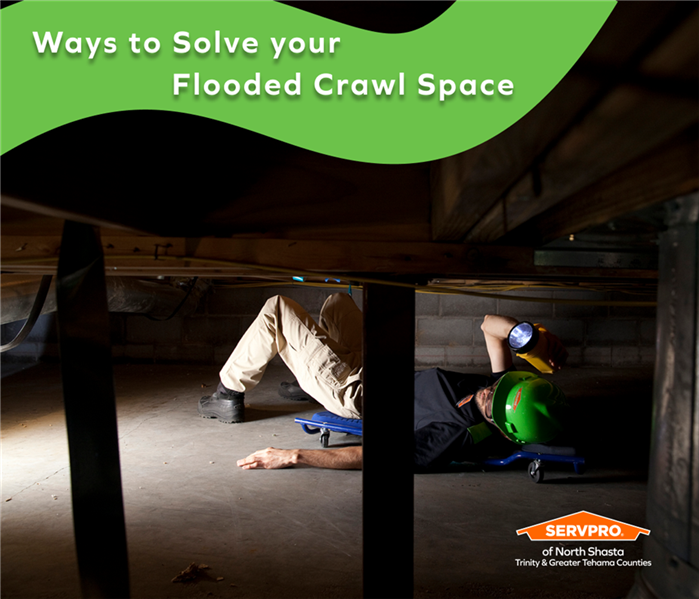Ways to Solve Your Flooded Crawl Spaces!
4/26/2022 (Permalink)
A storm in our neck of the woods brings rejoicing and celebration, with very little thought of the aftermath that heavy rains can bring. If you own a house with a crawl space, this can be potentially a disaster. Heavy rains can cause standing water with the possibility of permanent damage to your home. Leading us to the question …
Why are homes built with crawl spaces?
Building a house isn't cheap. One of the ways to cut costs is not having to level out the dirt and land your house's foundation will be built on. Not to mention crawl spaces create easy access to your HVAC and plumbing lines for future repairs. Making the cost of repairs drop significantly. Unfortunately, there is a downside to crawl spaces. Can we say MOISTURE!
That's right, ladies and gentlemen, moisture is the number one issue in having a crawl space. Mold, wood rot, and termites are just a few things that love moisture. So when the heavy rains move out, make a quick check for standing water. This could help prevent your house from looking like Johnny Depp's boat in Pirates of the Caribbean.
If you discover standing water in your crawl space,
Step one: would be, QUICKLY remove it. Depending on the amount of water, you may need to call a professional company to bring pumps to extract the water before it causes permanent damage to your home.
Step two: dry out your crawl space. If you are trying this DIY style, you will need to bring in a dehumidifier to help dry things out. NEVER allow the crawl space to air dry if there is significant water. The quality of the dehumidifier does matter to prevent any growth of mold or mildew. Depending on cost and budget, a quick call to your local restoration company could help you save time and reassurance in the quality of work.
When the water is removed, and everything is dry, bring on the preventative measures!
Follow these 4 steps to give yourself the lowest energy bills, and help prevent future damage to your home’s foundation.
- Seal the vents and openings by installing air-tight vent covers and doors.
- Install a sump pump. Check out this old house's 8-step DIY sump pump installation process. Warning, this is not an easy process, and we recommend calling the professionals.
- Install a plastic vapor barrier over your dirt floor and walls.
- Check your landscaping. Creating a gradual slope that angles away from the house can keep water from draining underneath your home. Your yard needs to slope six to eight inches away from your foundation.
Water damage can be menacing and tiresome, but your local SERVPRO is here to help! We know that all the preventive measures in the world can't always protect you from the unknown, and that is why our technicians are on call 24 hours a day, 7 days a week, 365 days a year.






 24/7 Emergency Service
24/7 Emergency Service
